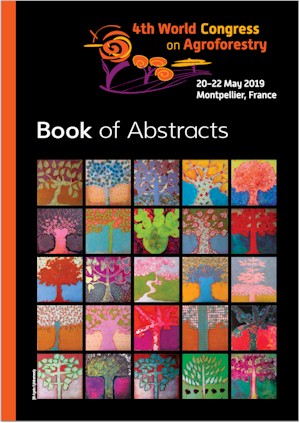| Paper |
 |
|
| Title | Carbon assessment for Robusta coffee systems across an intensification gradient | | Author | N Nguyen, T Tiffany, P Läderach, Philippe Vaast and D Ortiz | | Editor | Christian Dupraz, Marie Gosme and G Lawson | | Year | 2019 | | Parent Title | Book of Abstracts, 4th World Congress on Agroforestry. Agroforestry: strengthening links between science, society and policy | | Pages | 40 | | Call Number | PP00410-19 |
|
| Abstract: |
Introduction
The objective of this study was to compare the carbon trade-offs of different coffee systems via quantification of carbon stock and greenhouse gas (GHG) emissions.
Materials and methods
Six coffee systems of shaded and unshaded (highly intensive, in terms of input use), shaded with exotic and native native trees (moderately intensive), and low and high shade tree density (least intensive) from Vietnam, Uganda and India, respectively, were compared. Carbon (C) stock was calculated from tree height, diameter, and wood density extracted from ICRAF database (http://db.worldagroforestry.org/wd) using allometric equations partly developed by Chave et al. (2014). GHG emissions were calculated from data on soils, fertilizer use, crop residues, energy use, and transportation of inputs and outputs using CoolFarmTool, an online GHG calculator (Hillier et al., 2011).
Results and discussion
The study showed that, higher carbon stock systems , did not significantly reduce Robusta coffee green bean yield (2.4 vs 2.6 tons ha-1 in shaded and unshaded coffee systems, Vietnam; 1.06 vs 1.04 tons ha-1 in shaded systems with exotic and native shade trees, India) while helped increase significantly carbon stock compared to unshaded systems (e.g., 15.2 tons carbon ha-1, Vietnam). The additional carbon was achieved by growing primarily with fruit trees in Vietnam (85 trees ha-1, contributing 15.2 tons C) and in India by maintenance of an agroforestry system with native shade trees (up to 245 trees ha-1, contributing 77.6 tons C) or exotic (Grevillea robusta) shade tree species (397 trees ha-1, contributing 47.5 tons C). The study also revealed that the GHG emission per unit product of systems in Vietnam (3.46 – 3.98 kg CO2e kg-1) are not significantly higher than those in India (3.09 – 3.13 kg CO2e kg-1), despite a much higher GHG emission per ha (7.5 vs 2.4 tons CO2e ha-1, respectively) resulted from a significantly (3-fold) higher application of inorganic fertilizers, the main GHG contributor, in the former systems than the latter ones (around 2 tons ha-1 vs 0.7 tons ha-1, respectively). This results from the higher yield of coffee systems in Vietnam, which compensates for the effect of GHG emission when measured per unit product. That coffee systems of Uganda had low GHG emissions (0.72 kg CO2e kg-1) in spite of negligible inorganic fertilizer use (on average 5kg ha-1) is explained by extremely low yields (0.86 tons ha-1). This may imply a trade-off effect in that a higher application of inorganic fertilizers increases coffee yield but simultaneously creates a negative environmental effect via higher GHG emissions.
Conclusion
The introduction of shade trees to coffee systems of different input intensification helps provide significant carbon sequestration service while not significantly reducing coffee bean yield. Application of more inorganic fertilizers help increase coffee yield but must be optimized against the trade-off of causing higher GHG emissions. |
|